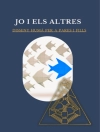Use the quick-start guide to create your course in a flash
Post course materials, give quizzes, facilitate discussions, and handle grades
You’re an educator, not a psychic, so how would you know how to use Blackboard with no instructions? These step-by-step examples show you how to set up a Blackboard classroom, put your materials on the Internet, communicate online with students, and even evaluate their performance.
Discover how to
* Navigate the Blackboard environment
* Customize your course menu
* Add and organize course materials
* Give online assignments
* Conduct online discussions and chat rooms
* Keep track of grades
Spis treści
Introduction.
Part I: What’s Blackboard All About?
Chapter 1: Your First Look at Blackboard.
Chapter 2: The Course-Development Process.
Part II: Easing into Blackboard.
Chapter 3: Got Learners? (Getting People into Your Course).
Chapter 4: Making the Course Your Own.
Chapter 5: Building Your Class Materials.
Chapter 6: Connecting with Learners.
Part III: Earning Your Blackboard Black Belt.
Chapter 7: Getting the Most from Blackboard.
Chapter 8: Assessing Learner Progress.
Chapter 9: Course Implementation.
Chapter 10: Course Management.
Part IV: The Part of Tens.
Chapter 11: Ten Superimportant 'Think Abouts’ for
Building Your Course.
Chapter 12: Ten Strategies for Organizing an Outstanding Course
in Blackboard.
Chapter 13: Ten Ways to Keep Learners Involved by Using
Blackboard Communication Features.
Chapter 14: Ten Ways to Assess Learning.
Chapter 15: Ten Questions to Ask Your Blackboard System
Administrator.
Chapter 16: Ten Things to Look Forward to in Blackboard Learning
System 7.1.
Part V: Appendixes.
Appendix A: Real-Life Issues in Teaching with Technology.
Appendix B: An Overview of the Blackboard Content System.
Appendix C: A Blackboard Course-Building Checklist.
Appendix D: Additional Resources on the Web.
Glossary.
Index.
O autorze
Howie Southworth is an experienced teacher, trainer, and
facilitator with a background in both student and instructor
development. His academic degrees are in computer science (BA) and
higher education administration (MA). He has been consulting on the
use of online course management systems for the past 5 years, and
teaching people how to teach for the past 15.
Howie has been invited to teach across the United States, Asia, and
Europe. He is the director of education for the Disaster Recovery
Institute International in Washington, D.C.
Yianna Vovides holds a Ph D in instructional design and
technology and works at The George Washington University,
Washington, D.C. Dr. Vovides assists faculty with the integration
of instructional technologies in teaching and learning. She is the
lead instructor in the use of the Blackboard Learning System and
Blackboard Content System and designs and implements learning
environments for both blended-hybrid and fully online courses.
Kemal Cakici has expertise in designing and implementing
information systems solutions in the contexts of education and
healthcare and has worked as a consultant in industry. He has
taught business, information systems, and engineering courses as a
faculty member. His academic degrees are in mechanical engineering
(BS and MS). He is completing his doctoral studies in information
and decision systems focusing on predicting the acceptance and
usage of Web-based information systems. Kemal is working as a
senior consultant for IMS Government Solutions.
Susan M. Zvacek, director of instructional development
and support at the University of Kansas, has been involved with
educational technology for more than 20 years and has worked in
community college, university, and corporate training environments.
Dr. Zvacek’s teaching experience includes faculty and
dissertation advisor positions at the University of Northern
Colorado, Old Dominion University, and Nova Southeastern
University.












